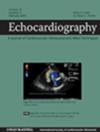Comprehensive Quantification of Fetal Cardiac Function in Gestational Diabetes Mellitus Using Advanced Fetal HQ Imaging Techniques
Abstract
Objective
Gestational diabetes mellitus (GDM) is a transient metabolic disorder associated with hyperglycemia, insulin resistance, and endothelial dysfunction. Although GDM typically resolves after delivery, it can have long-term effects on both maternal and fetal health, including potential cardiovascular complications for the offspring. This study aims to evaluate the impact of maternal hyperglycemia on fetal cardiac function using advanced fetal HQ (fetal heart quantification) imaging technology.
Methods
A prospective study was conducted from July 2019 to November 2024, involving 303 pregnant women in their second and third trimesters, including 105 with GDM (well-controlled) and 198 healthy controls. Fetal cardiac function was assessed using fetal HQ imaging, a two-dimensional speckle-tracking echocardiography technique. Measurements of global longitudinal strain (GLS), fractional area change (FAC), and fractional shortening (FS) were obtained for both the left (LV) and right (RV) ventricles. Correlations between maternal metabolic factors (BMI, HbA1c, triglycerides) and fetal cardiac parameters were also evaluated. Intra- and inter-rater reliability were assessed for all measurements.
Results
The GDM group exhibited significantly lower LV GLS compared to the control group (−21.5 ± 5.5% vs. −24.5 ± 4.9%, p = 0.000), indicating impaired myocardial deformation. No significant differences were found in RV GLS, FAC, or ejection fraction (EF). Significant differences in 24-segment FS values were observed in both the LV and RV, with the GDM group showing lower FS values across most segments, suggesting subclinical myocardial dysfunction. Reliability analysis demonstrated high intra- and inter-rater consistency for fetal cardiac measurements, with LV GLS showing excellent intra-rater reliability (ICC = 0.912) and strong inter-rater reliability (ICC = 0.725). HbA1c and triglycerides were negatively correlated with LV FAC, indicating that maternal metabolic factors may affect fetal left ventricular function.
Conclusion
This study demonstrates that GDM is associated with impaired fetal left ventricular function, particularly in myocardial deformation, as measured by LV GLS and FS. Maternal metabolic factors, including HbA1c and triglycerides, are linked to these alterations. Fetal HQ imaging is a reliable method for assessing fetal cardiac function and provides valuable insights into the cardiovascular effects of maternal hyperglycemia on the fetus.

 求助内容:
求助内容: 应助结果提醒方式:
应助结果提醒方式:


